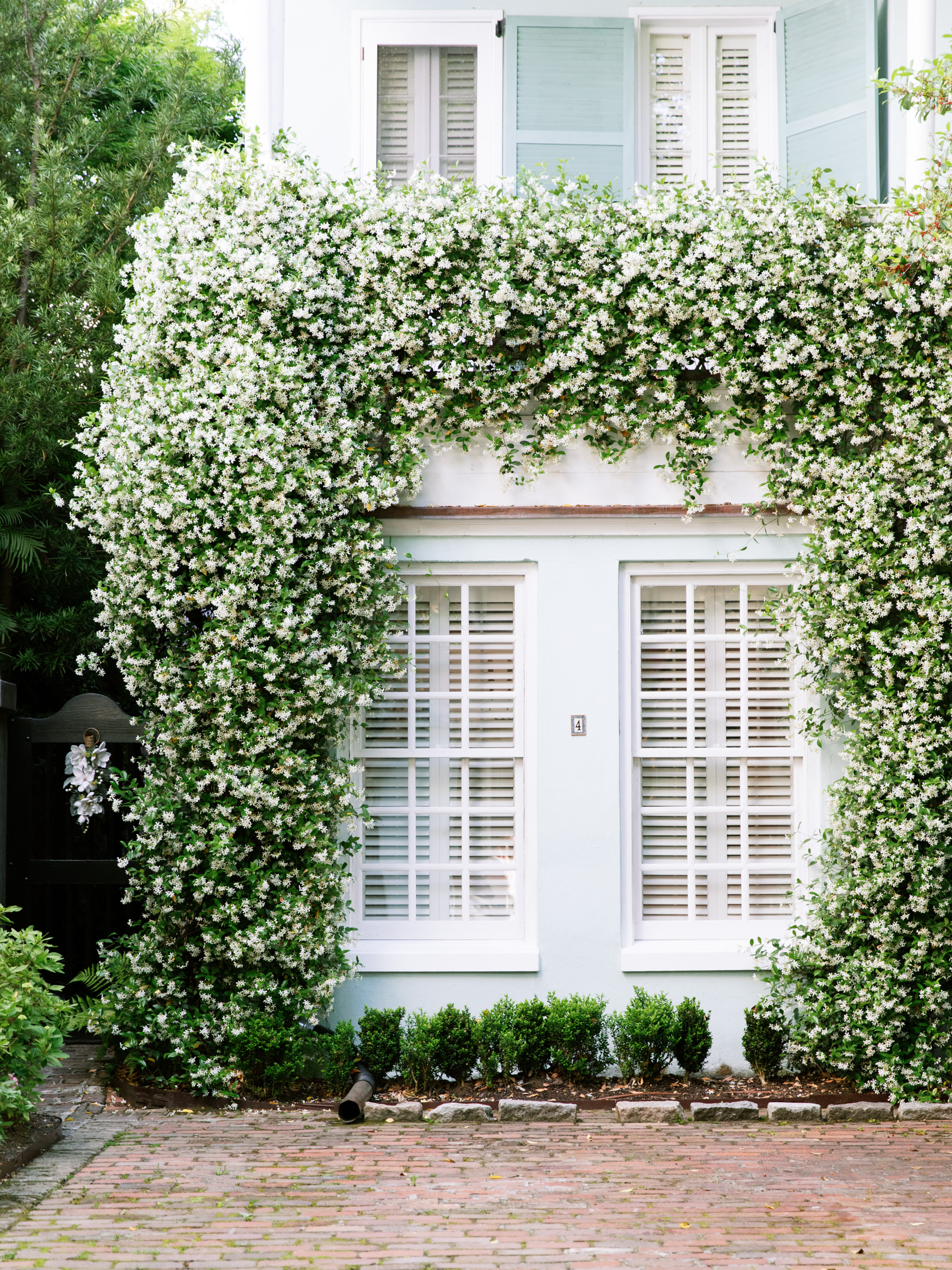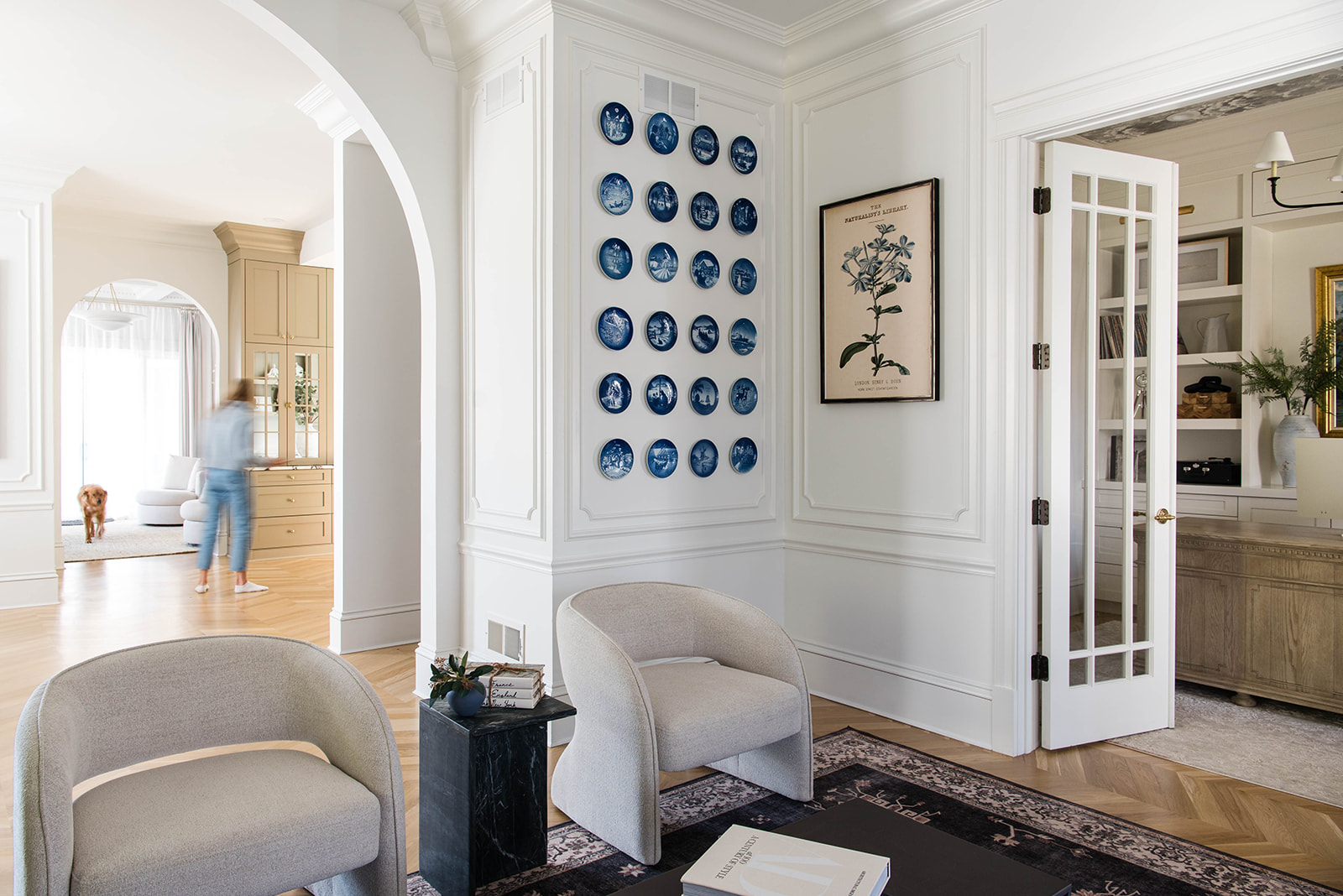
I still remember the first time a client nervously asked me, “Is it okay to mix metals in a bathroom?” She had fallen in love with an antique brass mirror, but her heart was already set on polished nickel faucets.
She thought she had broken some cardinal rule of design.
Spoiler alert: she hadn’t.
In fact, that combination became one of the most beautiful rooms we’ve ever worked on.
Mixing materials—especially metals and wood tones—is one of the easiest ways to add depth, personality, and soul to a space. But it has to be done with intention. So let’s talk about how to make it work.
Part I: The Art of Mixing Metals
One of the biggest misconceptions I hear is that all metal finishes in a room need to match. But a matchy-matchy approach can actually flatten a space. Done thoughtfully, mixing metals creates contrast and dimension.
Think of metals as characters in a room. They each bring something different to the table.
Here’s the key: Keep matching metals on the same plane.
In a bathroom, for example, let your faucet and lighting coordinate. They’re on the same visual line, and this repetition keeps things grounded. Then, let your mirror frame or cabinet hardware bring in a new finish—something complementary, but distinct.
And don’t forget: Metal pairings depend on what else is happening in the room. A bathroom with cool marble tile might call for polished nickel, while a space with warm wood tones might lean toward aged brass or oil-rubbed bronze.
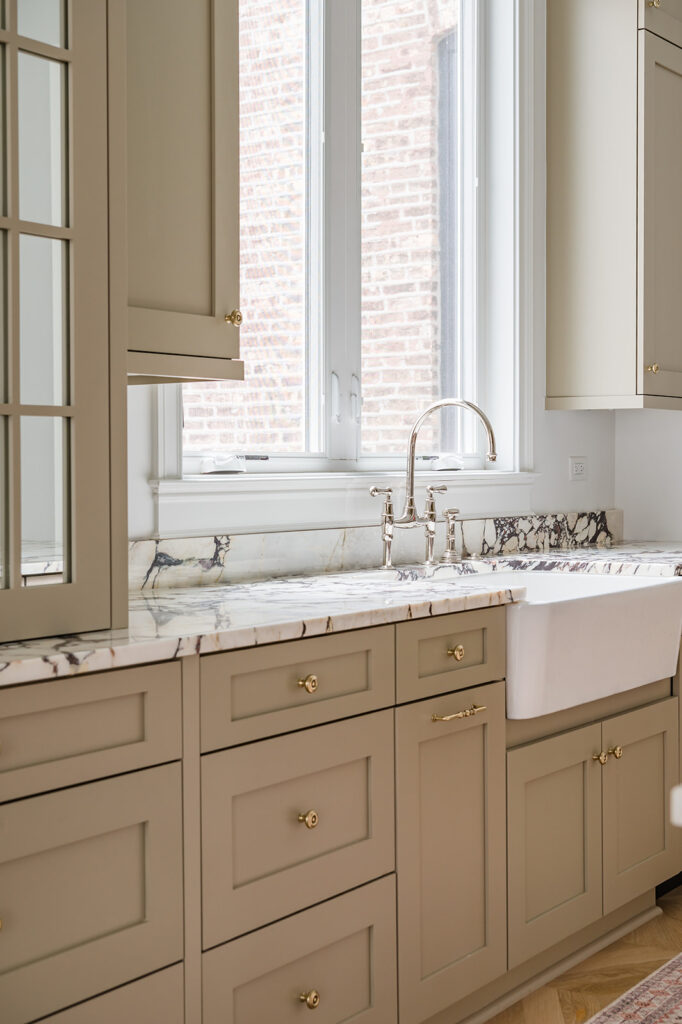
My advice? Order samples—lots of them.
Brass alone can look like 20 different materials depending on the finish: unlacquered, satin, aged, polished, antiqued. Lay your samples out together, see how they play with your tile, countertop, and lighting. Trust your eye.
Part II: Wood Tones—The Warmth Factor
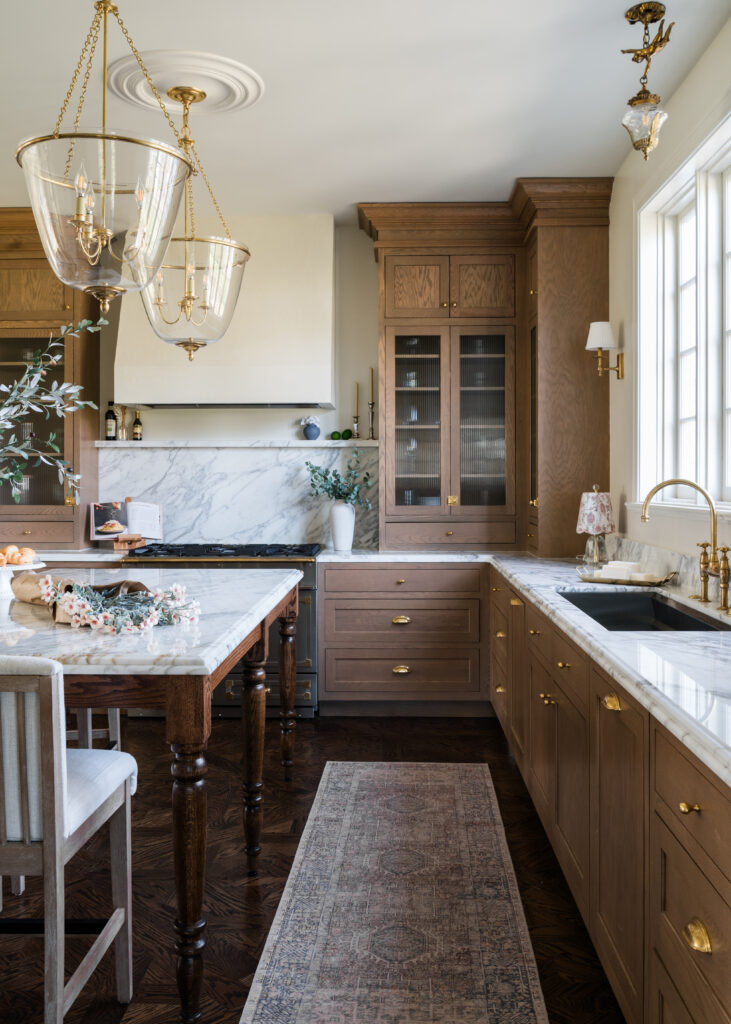
I once walked into a kitchen where the homeowner had tried to match their brand-new oak cabinets to an existing maple floor.
Close, but not close enough.
The result? It looked like a mismatch, not a match.
So here’s my rule: Either coordinate wood tones precisely, or go for deliberate contrast.
If your floors are a medium-toned walnut, pair them with a lighter, raw oak cabinet for contrast—or choose something close in tone for a seamless look. But don’t sit in the murky middle where it looks like you tried to match and missed.
And here’s something most people overlook:
Wood is about more than color—finish changes everything.
I had a client recently who loved the glossy look of lacquered cabinets. But she had three kids under six and knew fingerprints would drive her crazy. We landed on a soft satin finish—still elegant, but far more forgiving.
Gloss, matte, satin, raw—each finish tells a different story.
Use them to your advantage. Want more visual interest? Try a glossy walnut vanity paired with a matte white oak mirror frame. Layering textures is just as important as layering tones.
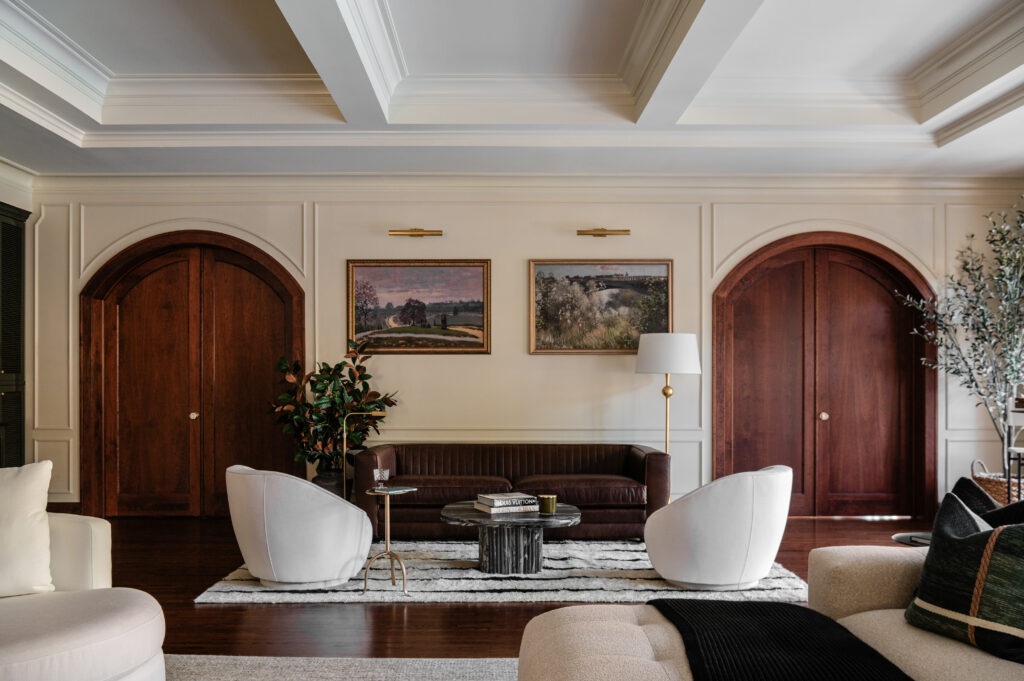
Designing with Confidence
Here’s the truth: There’s no single formula.
But there is a golden thread running through every well-designed space: intention.
Mixing materials is a little like curating a wardrobe.
You wouldn’t wear all gold jewelry, all the time. You mix. You balance. You layer textures. Your home should be the same.
So whether you’re designing your dream bathroom or refreshing your kitchen, don’t be afraid to mix finishes and tones. Just do it thoughtfully. With samples in hand. With patience. With curiosity.
Because when you get it right, the result isn’t just stylish—it’s soulful.
+ view the comments
